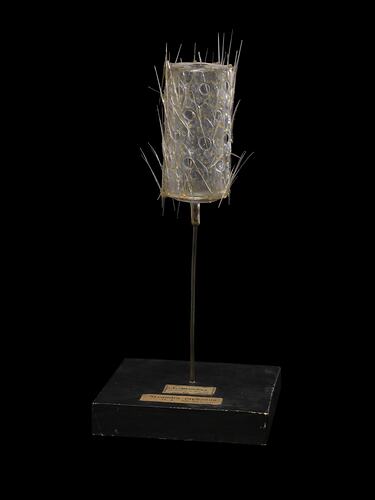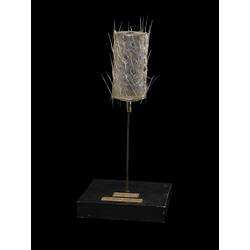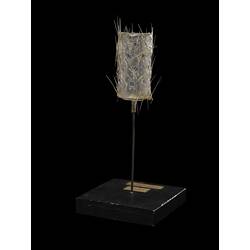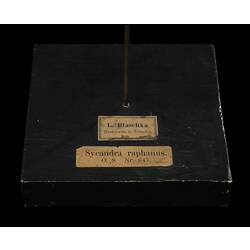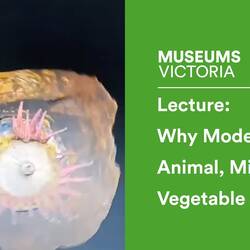Summary
This glass model was made by Leopold Blaschka (1822-1895), a highly skilled glass artist based in Dresden, Germany. Leopold Blaschka and his son, Rudolf (1857-1939) are best known for their glass models of plants and marine invertebrates. They were passionate naturalists and based their models on observations and drawings made in the field and in their own purpose-built seawater aquariums. Their painstaking work produced incredibly detailed and scientifically accurate models that still astonish scientists and artists today.
This Blaschka glass model of a sponge Sycon raphanus represents an early stage in its development. It is one of a series of models demonstrating the developmental biology of sponges. Sponges begin life as free-swimming larvae. After settling onto a suitable substrate the sponge will continue to develop and grow. During the stage modelled here, the body becomes more cylindrical in shape and spicules made of calcium carbonate begin to form within the body walls, providing structural support. Pores and openings on the body surface allow water to be drawn in and expelled, bringing food particles with it. Sponges have no true tissues or organs, and are one of the oldest and simplest life forms on Earth.
Specimen Details
-
Collection Names
-
Taxon Name
-
Author and date of publication
Schmidt, 1862
-
Number Of Specimens
1
-
Sex
Unknown
-
Specimen Nature
Nature: model, Form: dry
-
Category
-
Scientific Group
-
Discipline
-
Collecting Areas
-
Type of Item
Taxonomy
-
Phylum
-
Class
-
Order
-
Family
-
Genus
-
Species Name
raphanus
